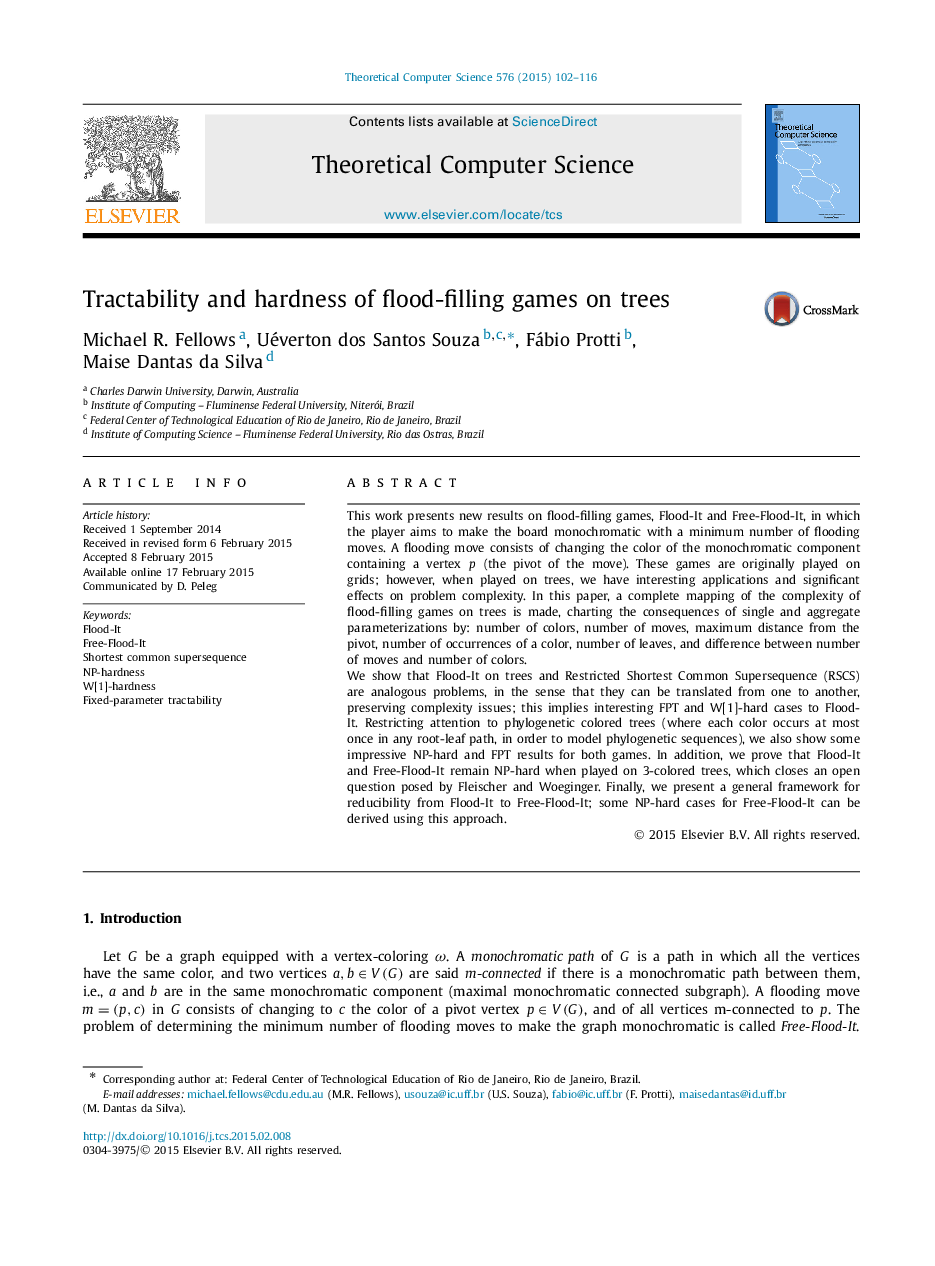| Article ID | Journal | Published Year | Pages | File Type |
|---|---|---|---|---|
| 437899 | Theoretical Computer Science | 2015 | 15 Pages |
This work presents new results on flood-filling games, Flood-It and Free-Flood-It, in which the player aims to make the board monochromatic with a minimum number of flooding moves. A flooding move consists of changing the color of the monochromatic component containing a vertex p (the pivot of the move). These games are originally played on grids; however, when played on trees, we have interesting applications and significant effects on problem complexity. In this paper, a complete mapping of the complexity of flood-filling games on trees is made, charting the consequences of single and aggregate parameterizations by: number of colors, number of moves, maximum distance from the pivot, number of occurrences of a color, number of leaves, and difference between number of moves and number of colors.We show that Flood-It on trees and Restricted Shortest Common Supersequence (RSCS) are analogous problems, in the sense that they can be translated from one to another, preserving complexity issues; this implies interesting FPT and W[1]-hard cases to Flood-It. Restricting attention to phylogenetic colored trees (where each color occurs at most once in any root-leaf path, in order to model phylogenetic sequences), we also show some impressive NP-hard and FPT results for both games. In addition, we prove that Flood-It and Free-Flood-It remain NP-hard when played on 3-colored trees, which closes an open question posed by Fleischer and Woeginger. Finally, we present a general framework for reducibility from Flood-It to Free-Flood-It; some NP-hard cases for Free-Flood-It can be derived using this approach.
